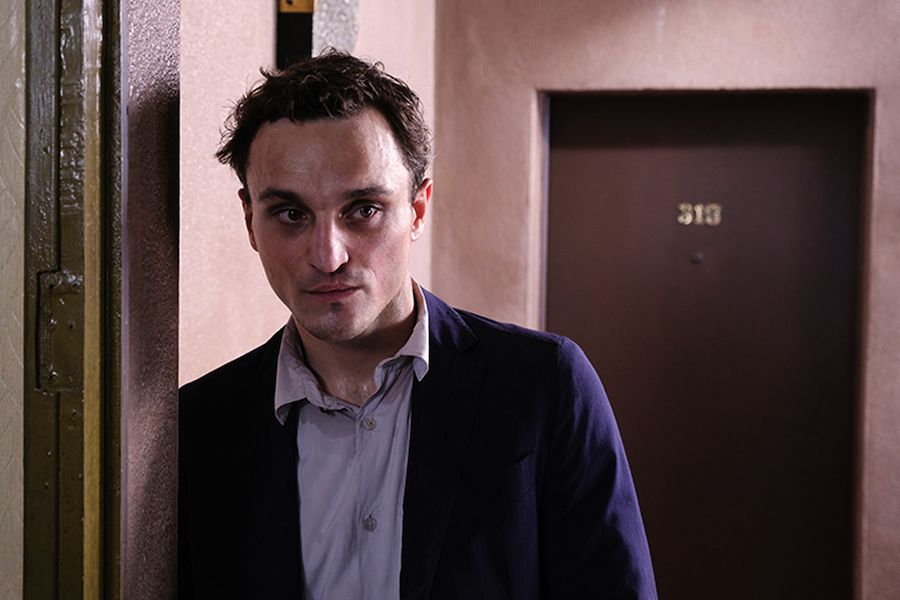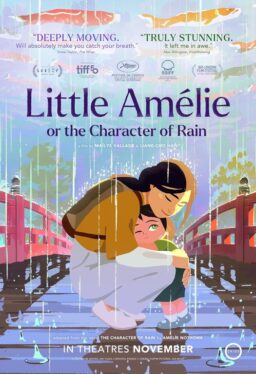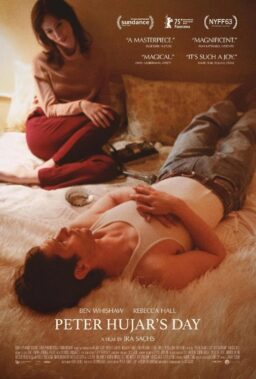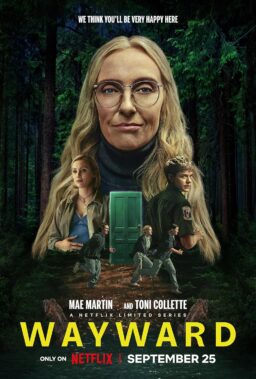German auteur Christian Petzold’s new film, “Transit,” takes an entrancing look at the ghosts that walk among us, searching for people who may no longer exist. Set in a Marseilles overtaken by fascist forces, the line between past and present is obscured in a way that feels eerily prescient. Petzold’s brilliant script, adapted from Anna Seghers’ novel, reflects how fanatic nationalism continues to rise across the world, popularizing forms of intolerance that had once appeared to have no future apart from collecting dust in history books. Our protagonist is Georg (Franz Rogowski), a man attempting to outwit Nazis by posing as a dead author, hoping the new identity will assist him in escaping France. His emotions become complicated, to say the least, when he finds himself repeatedly encountering the author’s wife (Paula Beer, star of the Oscar-nominated “Never Look Away”). The film’s elegant portrayal of a deliberately jumbled narrative is best described by one of its own lines, “a confused story in immaculate handwriting.”
“Transit” also serves as the latest triumph in the career of Rogowski, who’s quickly gaining an international reputation as one of the leading talents of his generation. From his breakout roles under the direction of Jakob Lass (“Frontalwatte,” “Love Steaks,” “Tiger Girl”) to his staggering showcase in Sebastian Schipper’s one-take wonder, “Victoria,” the 33-year-old German actor has mesmerized viewers with his humor, raw magnetism and startling vulnerability. He easily walked away with his scenes in Michael Haneke’s “Happy End,” going toe-to-toe with the great Isabelle Huppert, inhabiting the role of her troubled son, Pierre. During my conversation with Lass at the Chicago International Film Festival, he noted that “an important quality to have in improvisation is you can’t be afraid that your character will possibly end up as the loser of the situation. Franz does that with such grace, and it’s so much fun to watch.”
I recounted this quote to Rogowski during a Q&A at CIFF last fall, and he provided a memorable response. “As an actor, I like to put myself in a position where I could lose,” he told me. “It’s nice because you always want a dialogue with your partner in front of the camera. You want something to happen. By putting yourself in that vulnerable position, you are allowing the other person to crash or smash you, or protect and save you. It’s very nice to damage your own character without breaking it. It’s one of my favorite things.” Earlier that day, Rogowski spoke with me about his background in dance, his love of Sia’s “Chandelier” music video and the painstaking challenge of capturing an entire film in a single take.
Tell me about your origins in choreography, which predated your work as an actor.
The start of it all, I think, was a bad experience in high school. I needed to do something that wasn’t based on reading books or sitting on a chair and just repeating what someone tells you to do. For me personally, at the end of the day, I am looking for a certain, specific form that enables me to transform life into art, more or less, and for all my life, that has been the performing arts. It started with theatre and then turned into contemporary dance. I was interested in authorship, so I started to choreograph and collaborate with directors.
Then I decided to change fields and started doing movies with people like Jakob, people who were studying directing. At that time, I was enrolled at a university in Berlin, and Jakob became one of the first directors that would give me a role—a role as a choreographer, interestingly. The first work I had on a film set was choreographing a bunch of amateurs in the background. Then one of the actors didn’t show up, so I got this small part, which just required me to read a newspaper on a bench. He liked what I did, so in the next movie, he offered me a main role.
Jakob told me that you stole the show, despite your brief screen time in this short film.
It was a little love story between a man and a woman. They’re strangers sitting on this bench when they begin to look at each other. Unfortunately, my character is in between them reading a newspaper, and he is so interested in it that he constantly moves his head in such a way that he makes them unable to see each other. I just tried to do it in a good way, but I was quite innocent, I guess. Maybe that was the reason why it worked. It is good to be innocent.
Has your training in dance enabled you to be more intuitive in knowing when and when not to be in control of your physicality?
When working with directors like Jakob or Terrence Malick, whose films rely a lot on improv, every scene is based on the moment, regardless of how much you prepare. It helps to feel your body and know a bit about your body, but there’s also the danger to know too much about your body and to be too aware, and you see that. I think dancers are the worst party people because they cannot let go and are aware of everything. They’re like, “Move the hips, relax the pelvis more,” and you cannot really have fun like that. So I think intuition is important, but to be intuitive, you need to know certain things in order to create a space without fear, where you can trust yourself.
Whenever I see you in a movie, I feel like I could meet your characters on the street. It’s not “acting with a capital A.”
Yeah, I try to be person or a creature, but I don’t try to be an actor. I really don’t want to see an actor onscreen. I want to see a person.
In Jakob’s films, “Love Steaks” and “Tiger Girl,” I am especially struck by the use of the female gaze, resulting in the men being stripped down rather than the women.
I live in a bubble, as most artists do. My home is in Berlin, which is quite queer-aware and experimental. In my bubble, it’s kind of normal to show vulnerability, and it would be very weird to be the kind of man who feels strong in a group of males that drink beer. I don’t really know these people.
Me neither. [laughs]
I know they go to the soccer game, and I know where it is, but I live in a different zone. I agree that Jakob’s work is fantastic because of the fact that he gives this classic element of violent behavior to a female character. Sometimes there’s not even a reason for it, such as when the women in “Tiger Girl” destroy a car with a baseball bat. They just like to do it, and he doesn’t have to comment on it. It’s just cool, and it’s very interesting that when the film was released in Germany, people were writing about how violent the film was. If the characters had been men, nothing critical would’ve been written about it. That’s what I love a lot about that movie. It empowered women.
Even in “Love Steaks,” it is the woman (played by Lana Cooper) who is pursuing your character.
Yeah, she is the aggressive one, and is a very aggressive person in real life. She’s a great actress.
Was it empowering for you to be made so vulnerable, both physically and emotionally, in your earliest movie roles?
I love to do it as a person and also as a actor. I also love to put myself in a vulnerable position to see what the other person will do in the scene. When you act, there is always this power shift that occurs. Keith Johnstone wrote some interesting books about improvisation and interaction, and Jakob is working a lot with that. He wanted to craft a dynamic where my character is weaker than Lana’s, and at the end, it shifts. As an actor, I love to propose vulnerability and then see how somebody deals with it in a scene, because it allows your partner to take care of you or to really put you down. It’s interesting to risk your own strength in front of the camera.
I wrote a piece for the Goethe-Institut about how “Tiger Girl” serves as a female spin on “Fight Club,” where the two female leads could be interpreted as each other’s alter ego. It straddles the line between empowering and cautionary.
It’s a reflection of the part of the world that we live in. Our neighborhood is in the area of Berlin known as Kreuzberg, and the perspective that Jakob expresses is quite normal there. I think it’s true what he said to you that he wasn’t intending to make a super-political movie. He just likes the sort of woman who can beat up a man, and he’s sensitive at the same time. Maybe that’s just his taste, and a flavor that we are used to.
My mind boggles at the thought of how director Sebastian Schipper went about choreographing “Victoria,” shot in a single astonishing take that runs well over two hours. For you and the other actors, it must’ve felt like a dance.
Yes, it was very physical. My dance has always been based on pedestrian moves and gestures. I would just look at what’s behind me rather than spiral my spine. The dances I choreographed were always based on very concrete decisions and a concrete world, so “Victoria” absolutely felt like dance. The fact that it’s a one-take movie requires a one-take wonder, and to get one on film is quite a lot of pressure. We were all in the same boat, we all took the same risks, and that united us. It turned us into somewhat of a Fight Club.
What do you do during the moments when the camera isn’t on you during the two-hour-plus take?
That is the hardest part, because you cannot just make a break. There are scenes where we aren’t onscreen for 15 minutes or so, and those are the most difficult moments. We would smoke six cigarettes in 15 minutes, and just hit our chest to stay in the role. When the camera’s there, everything feels more real, as an actor. You’re just in it. Then once you are offscreen, and you have a break that runs for 20 minutes, it is very challenging.
It must be all about keeping yourself in the zone, as if you are an extra.
When you aren’t the main character, it also means that 60 percent of the time, you are not really onscreen, but you have to be in the moment all the time.
How many takes were filmed?
We did three big takes. Before that, we had ten nights where we’d rehearse a tenth of the movie each day. So the first night, we would be trying to get in the club, and then walking to the corner. The next night, we’d be at the corner with the police car, and then get some beer. And then the night after that, we’d be going up on the rooftop, and figuring out how to deal with the mirrors in the elevator, for example. By the end, we had all the materials that we needed, and we could have edited it together, but we knew that we wanted it all to be done in one take. So we had three nights over the course of three or four weeks to do it. It was always on a Sunday night going into Monday morning, from 2am to 6am.
We chose an area to film where there are no people at night, because all that is located there are offices. It’s not like in New York, where the nightlife never ends. There is no Wall Street, and the offices are closed during the night. It was still kind of risky, though, because if you have someone in the frame who looks in the camera, it’s over. The first time we filmed the take, it was good and safe. Sebastian said, “We did it! We did everything. Now you have to take a risk.” On the second take, we took a risk, and Sebastian said, “Man, it’s bad,” especially regarding me and Burak Yigit, one of the other actors. We had to come to his apartment and he asked us, “Guys, what’s wrong with you?”
What was the problem?
I don’t know, I think he was missing some necessities. He needed more sweat, more fever, more fear, and he didn’t really feel it. I don’t know why. We were already so scared before the second take, so prior to the third one, we didn’t sleep for three nights. I was smoking two packs a day. We really did everything we could on that third take because it was the last chance we had, and that’s the one that comprises the whole movie. It really is one take. There is no editing in the image. The sound, however, is edited. In the elevator, for example, we are muted, and other sounds are added, such as gunshots. It’s interesting that this movie is edited on an acoustic level.
You earned perhaps the biggest laugh in any Michael Haneke movie when your character, Pierre, mimics Ryan Heffington’s now-iconic choreography for Sia’s “Chandelier” music video in “Happy End.” It’s both hilarious and painful to watch your character, a struggling addict, attempt to replicate the moves of a song about alcoholism.
In the original script, this scene doesn’t exist. Michael was casting for a French person to play Pierre, so when he decided to cast me, he had to reconsider the character a bit. In terms of the text, I would speak in German and it would be dubbed, because I am a French guy in the movie. Then Michael came up with the idea of adding this scene in order to give my character something physical to do, and then he let me come up with the song.
I made some proposals, and he chose the one he wanted. I also loved the song because of the content, the choreography and then Pierre’s interpretation of it. He must have seen the music video several times at home, lost and drunk in that apartment that his mom bought for him. He’d watch it over and over again on YouTube. It’s kind of hilarious that he prepares this choreography and then when he is drunk enough to do it, he does it in that way. [laughs] I love my character for doing this scene.
What did you find appealing about the original music video?
I enjoy the performance of the girl [Maddie Ziegler] a lot. I think this girl in combination with that song and the way she expresses herself through these movements is very touching, and also somehow new. I’ve never seen dance quite like this before. It’s so beautiful to see a girl who went through this ballet education manage to still be free and wild. This combination is really rare, and I think that’s what everybody loved about the video.
Pierre comes from a background that is not ballet, but it is certainly bourgeois at his house, and he wants to break free of it. He is like a teenager, even though he is 26 or 27. He wants something else. The problem is that he doesn’t know what that something is, and he doesn’t know where to go. He just knows that he wants to run away, and that’s very exhausting. It’s like puberty. It’s a very exhausting state of mind, and that’s why I felt this song fit him perfectly.
I was also amused by the sudden act of violence that occurs after you invite the refugees to your mother’s dinner.
I definitely sensed the humor in the dance scene, and felt it a little bit in the moment you just mentioned. Michael really knows what he wants. He sharpens the knife until it cuts, and the slightest detail out of place could disturb the scene. My character’s speech in that scene, when he brings in the refugees to the dinner, was one of the toughest shooting experiences in my entire life. I think it was the most expensive scene of the movie because we had an entire studio filled with people dressed in designer clothes. Because of everything that occurs in that scene, including my speech, we shot it 45 or so times over the course of one and a half days.
What distinguishes Christian Petzold, the director of “Transit,” from the other great filmmakers you have worked with in the past?
What is very specific about him is that he is a walking encyclopedia of cinema. He has a movie quote for every kind of life situation or acting moment. If you have any questions, he could come up with a quote, a reference, a book, a movie scene, and he would just give you all the materials you need in order to be inspired. The preparation also consists of watching movies together, and talking about the scenes. We would rehearse onset without technicians, without lighting, nothing—just us and him, as if it were a theatre production, and we would rehearse.
Then while we would prepare and go to the makeup and costume people, the set would be built up in the meantime. We would come back and do one take, literally one take—for technical reasons, sometimes a second take—but there was no working hard onset. It would be a very careful preparation, and then we would just do it once and go home. It was a very specific, special approach paired with this careful preparation and all his knowledge. It has been an incredible experience.
To what degree did the narration detailing Georg’s inner thoughts guide your approach to the character?
I tried to be in the moments that you see onscreen. I thought it would not be a good decision to embody the thoughts while you can hear them. It’s often boring to hear and see things that are conveying the same ideas. I prefer a podcast or pantomime, but not all at once. Sometimes Christian describes things that you can see onscreen, so it is a literal description, and sometimes he describes things that you don’t see. That creates a space for the audience to find their own perspective.
When I interviewed your “Tiger Girl” co-star, Maria Dragus, she spoke of her belief in the “need for integration” and the importance of not pushing away everything that is new. Films like “Transit” illustrate how art can prove to be a humanizing force, as conveyed by the line, “the complexities of people that annoyed him in life make them compelling on the page.”
Absolutely. One of the main reasons why I wanted to make this film with Christian was that we are dealing with immigrants coming into Europe every day. Marseilles is a city on the edge of Europe, and our history has been all about our efforts to leave Europe while being trapped in bureaucratic hell. Today, the same thing is happening, it’s just the other way around. I think it is very important not to forget about that reality.
The fact that we don’t comment on Marseilles being modern day Marseilles, with televisions and phones coexisting next to this ghostly vision of the 30s, was very interesting to me. When I read that, I thought, ‘I should meet Christian.’ He wrote an incredible script, and I wanted to work with him and with Paula. This movie enables people to reflect on some things that are essential for our society today.
The wrenching moment when a mother is dragged from her children reminded me of the families being separated at the U.S.-Mexico border. This story can apply to so many places in the world today.
Very true, though I must admit that since I live in a bubble of making art and being an actor, the reason why I wanted to be in “Transit” was not because it is dealing with the refugees. To be honest, eight out of ten scripts that I read have some refugees in it, just to be political, and I think that’s also a problem. I love cinematographic art for the sake of being art, for the sake of creating great movies. The main reason why I agreed to make the film was because I thought it could become a great movie. The refugee part is important too, but what made me fall in love with the story was my meeting with Christian, and the script itself.
The very final shot of Georg’s face provides us with just enough hope to heighten our intrigue.
That’s exactly what we intended to do. Paula, Christian and I all have different endings in our fantasies.
Header photo credit: Franz Rogowski in Christian Petzold’s “Transit.” Courtesy of Music Box Films.












